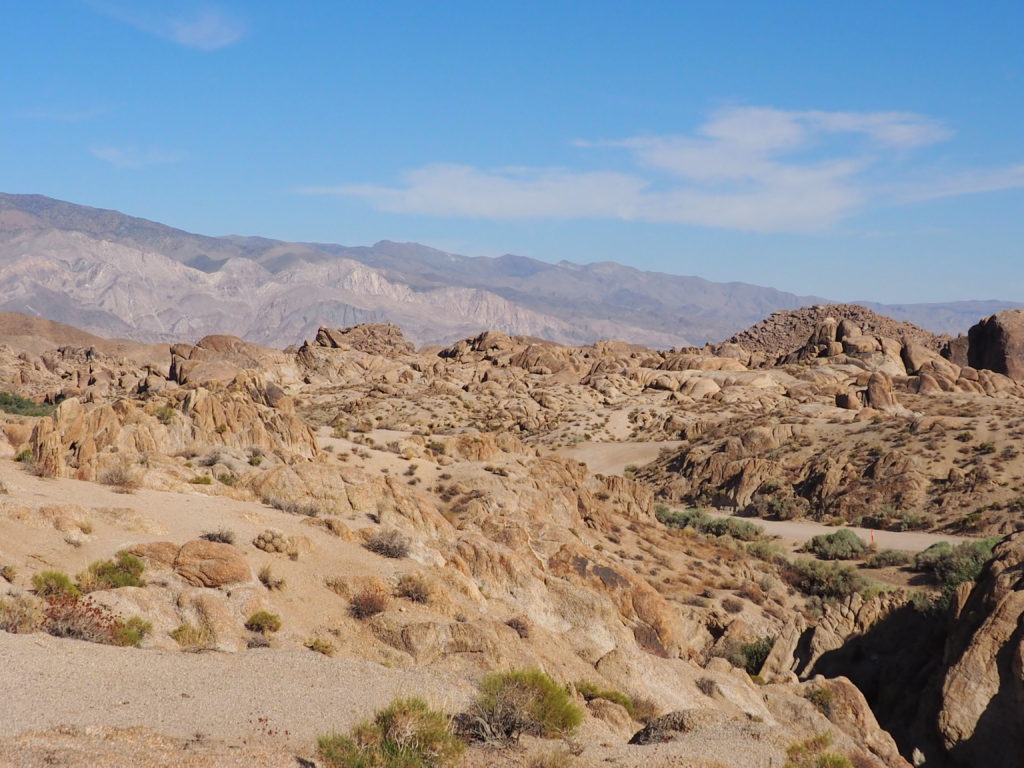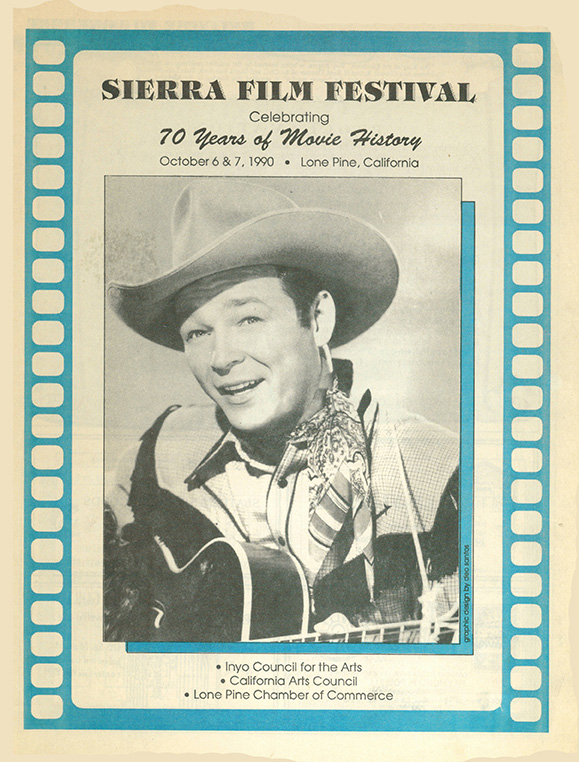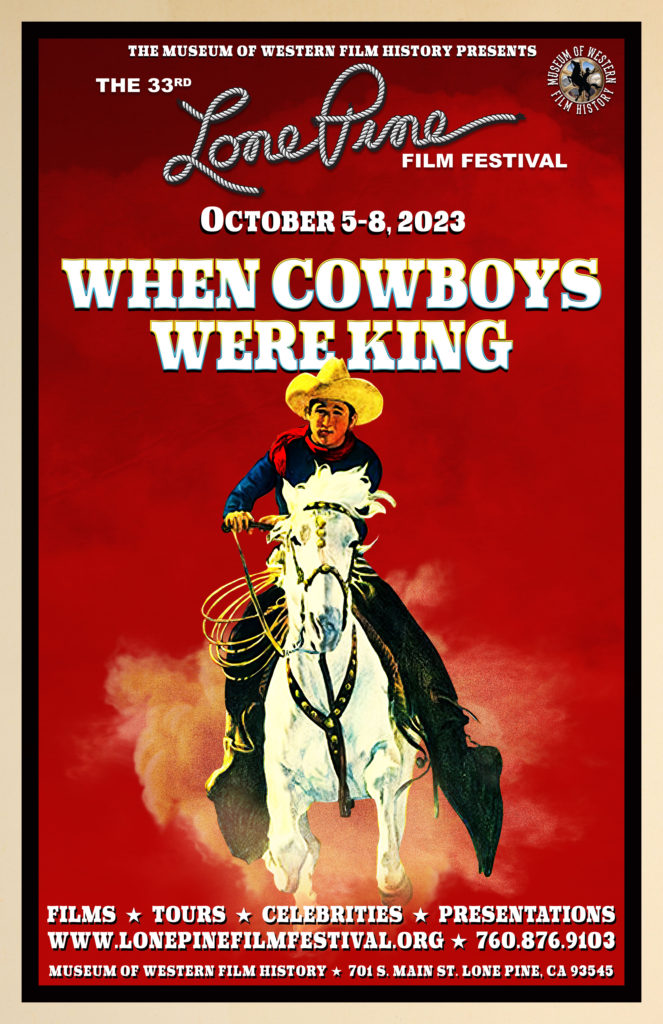
This year’s Lone Pine Film Festival explores the American Western at one of its most storied—and true to life—natural settings.
Written by Constance Dunn
Bonanza. How the West Was Won. The Lone Ranger. If you’ve ever watched a Hollywood Western, you’ve probably caught a glimpse of the Alabama Hills. It’s a dramatic natural landscape surrounding Lone Pine, California—about three hours north of Los Angeles—where film crews and actors have flocked for over a hundred years to capture its vivid kaleidoscope of natural light, unearthly rock formations and towering ranges on celluloid. In 1990 a few local groups came up with the idea of a tribute weekend to pay homage to the rich Hollywood history of the area.
So poignant and successful was that first event, which drew notable stuntmen, directors and stars, including Richard Farnsworth and Roy Rogers—who filmed his first star role in the area and dedicated a historic marker at the must-see site of Movie Flats, about 3 miles west of Main Street—it was made an annual affair. Over 30 years later the Lone Pine Film Festival will once again host thousands of guests who come to the small Western town the first weekend in October for a flurry of screenings, tours, speakers and panel discussions.

This year the festival’s focus is on the Hollywood Western, a subject rich in material given the Eastern Sierra Mountain region has served as the backdrop of over 800 movies; roughly half of them concentrated in the Alabama Hills. Even Duke filmed his share of movies in the area—13 of them total, starting with the early action-Western yarn Somewhere in Sonora (1933), its black and white trailer proclaiming, “John Wayne Has a Saddlebag of New Tricks.”
It’s a prime example of the B-grade Western that Duke flourished in during the first phase of his Hollywood career. Of the John Wayne films shot in the area, the bulk of them belong to this budget-conscious niche, which was prolific in terms of local production, starting from the early 1920s silent days through the 1940s. This year the festival will pay homage to the B-Western, along with TV Westerns and A-list features shot by marque directors such as John Ford during the Golden Age of the Western, lasting from the 1940s to 1960s.
A unique feature of the festival is being able to watch a film or TV episode—then venture out to a local site to see where scenes were filmed. Over 20 such tours are scheduled for the weekend, so festivalgoers can start their day at a screening of the 1960 Audie Murphy film, Hell Bent for Leather, for instance, or an episode of TV’s Have Gun – Will Travel, then join a car caravan to explore shooting locations. And while many Western stars of yesteryear have passed away, this year’s Festival program will include several offspring sharing remembrances of their famous kin, including Roy Rogers’ daughter Cheryl Rogers Barnett and Joel McCrea’s grandson Wyatt.
A sense of community and camaraderie is spun out of the festival’s program, which kicks off with a Thursday evening barbecue and costume contest at the Museum of Western Film History, the location of many screenings. Days start with sunset tours accompanied by a cowboy poet, where you can watch Mt. Whitney’s peak glow with early light, or an exploration of local trails on horseback. Sunday features music and worship at Cowboy Church, and in the afternoon, a festive parade down Main Street. More than just a Hollywood setting, Lone Pine is a slice of the American West that calls many back each year, and whose Festival concludes fittingly with friends, new and old, gathered around the campfire to share poems, tales and songs—a festival tradition for more than 30 years.



